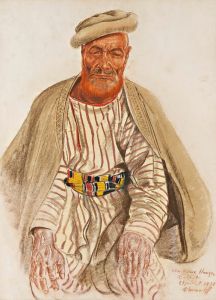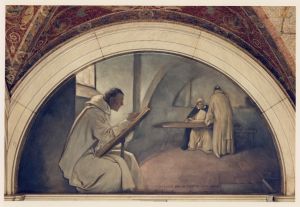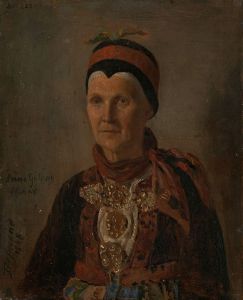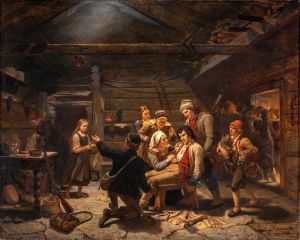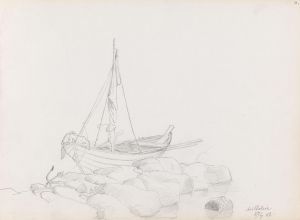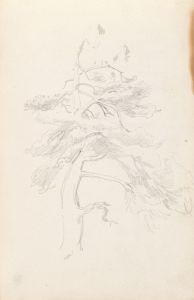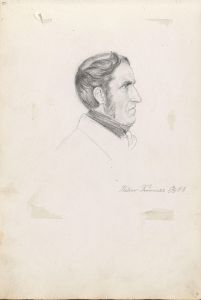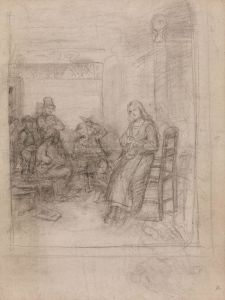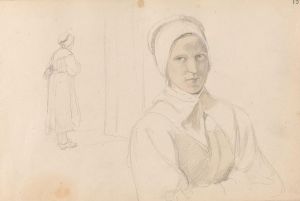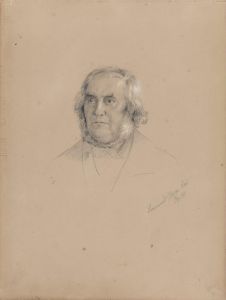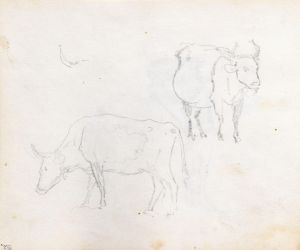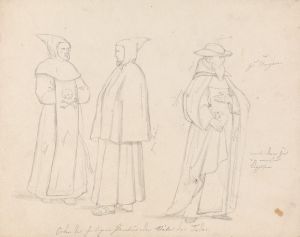
Fra Glion
A hand-painted replica of Adolph Tidemand’s masterpiece Fra Glion, meticulously crafted by professional artists to capture the true essence of the original. Each piece is created with museum-quality canvas and rare mineral pigments, carefully painted by experienced artists with delicate brushstrokes and rich, layered colors to perfectly recreate the texture of the original artwork. Unlike machine-printed reproductions, this hand-painted version brings the painting to life, infused with the artist’s emotions and skill in every stroke. Whether for personal collection or home decoration, it instantly elevates the artistic atmosphere of any space.
Adolph Tidemand was a prominent Norwegian painter in the 19th century, known for his detailed and realistic depictions of Norwegian folk life and traditions. His works often captured the essence of rural Norway, focusing on the everyday lives of its people, their customs, and their environments. One of his notable works is "Fra Glion," which translates to "From Glion."
"Fra Glion" is a painting that exemplifies Tidemand's commitment to portraying Norwegian culture with authenticity and respect. While specific details about the painting "Fra Glion" are not extensively documented, Tidemand's broader body of work provides context for understanding his artistic intentions and style.
Tidemand was born on August 14, 1814, in Mandal, Norway. He studied at the Academy of Art in Copenhagen and later at the Academy of Fine Arts in Düsseldorf, Germany. The Düsseldorf school of painting, known for its detailed and realistic style, significantly influenced Tidemand's approach to art. This influence is evident in his meticulous attention to detail and his ability to capture the nuances of Norwegian life.
Throughout his career, Tidemand traveled extensively throughout Norway, gathering inspiration from the country's diverse landscapes and communities. His travels allowed him to immerse himself in the local culture and traditions, which he then translated onto canvas with great fidelity. This dedication to authenticity made his works resonate deeply with the Norwegian public and contributed to a growing sense of national identity during a time when Norway was seeking to assert its cultural independence.
Tidemand's paintings often feature scenes of rural life, including weddings, religious ceremonies, and everyday activities. His ability to convey emotion and narrative through his art made his works not only visually appealing but also culturally significant. By documenting the lives of ordinary Norwegians, Tidemand played a crucial role in preserving the country's cultural heritage.
In addition to his focus on rural life, Tidemand was also known for his portraits. He had a keen eye for capturing the character and personality of his subjects, whether they were individuals or groups. This skill is evident in many of his works, where the expressions and postures of the figures convey a sense of realism and immediacy.
While "Fra Glion" itself may not be as widely discussed as some of Tidemand's other works, it is likely that it shares these characteristics. The painting would have been created with the same attention to detail and cultural sensitivity that Tidemand applied to all his works. His paintings continue to be celebrated for their historical and cultural significance, offering a window into 19th-century Norwegian life.
Adolph Tidemand passed away on August 25, 1876, but his legacy lives on through his art. His works remain an important part of Norway's cultural history, appreciated for their beauty and their role in shaping Norwegian national identity.






